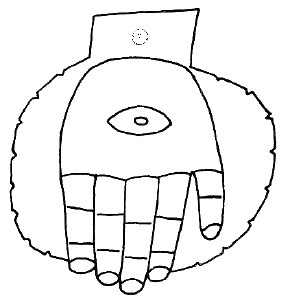 "God's abstention
"God's abstentionis only from human dialects;
the holy voice utters its woe and glory
in myriad musics,
in signs and portents.
Our own words are for us to speak,
a way to ask and to answer."
Denise Levertov
 Returning to Tucson, cars and asphalt and noise, the urban cacophony (and summer heat), I feel melancholy. The solitude and solace of New Mexico's vast skies and open space worked it's magic for me, peeling away the dross like old paint, revealing essential layers beneath. I hope I can retain this spaciousness.
Returning to Tucson, cars and asphalt and noise, the urban cacophony (and summer heat), I feel melancholy. The solitude and solace of New Mexico's vast skies and open space worked it's magic for me, peeling away the dross like old paint, revealing essential layers beneath. I hope I can retain this spaciousness.A HOUSE OF DOORS
I.
He opened the door and walked outside.
It was summer, I remember cicadas
scratching a hole in the door
where a man used to be.
The house I live in
has various dimensions.
I recall white rooms,
wallpapered with old letters.
Some rooms are tombs for the heart,
full of damp bones
and useless ornaments.
I remember a pink room
that pressed me until I couldn't breath
Some rooms diminish
some rooms compress.
Rooms can be tricky.
What I remember are doors.
I live in a house of doors.
II.
She stood at the door
and walked outside.
It was spring, I remember
lilacs framed by a window
where a girl in a white dress stood.
A white dress,
flying like a flag,
a white dress
opening like a morning glory.
III.
I opened the door:
she was sitting there,
the girl with the Kodak smile.
The sign on the door said 1969,
it was February in Berkeley.
The plum trees were red in the rain,
steam rose from an espresso machine
the girl listens
to the boyfriend whose name
I don’t remember, cigarette in hand
a baton, orchestrating. She listens,
she knows the punch line.
When I closed the door
she slipped away behind me,
riding a train
I could see in perspective
riding to a vanishing point.
IV.
An onion, that's it.
All those layers.
Just when you think
you can name yourself,
you discover new layers,
you’re forming a new skin,
a new ring.
But there's a core.
And where
does that core start?
V.
This room I live in.
These walls.
They seem to be getting thin.
I can almost see through them today.
Today I feel
like a Chinese box
one inside another.
I consider a state of grace:
I think
I think I may be the gate
that opens
into another room
made of clouds, or sky
or something
I can't name.
I remember white dresses I wore
I remember doors
I can't remember the girl's name.
"Funny", she said,
"how time takes the names out of things,
and bleaches the rest kind of transparent."
Funny.
Chiefly, I remember doors.
VI.
Sometimes,
you open a door
any door
and you have to walk outside
into something tender
like a touch
on a winter night
into a quiet yard
because of a voice you hear
or a bell
or a train
pulling away
somewhere
Lauren Raine


































